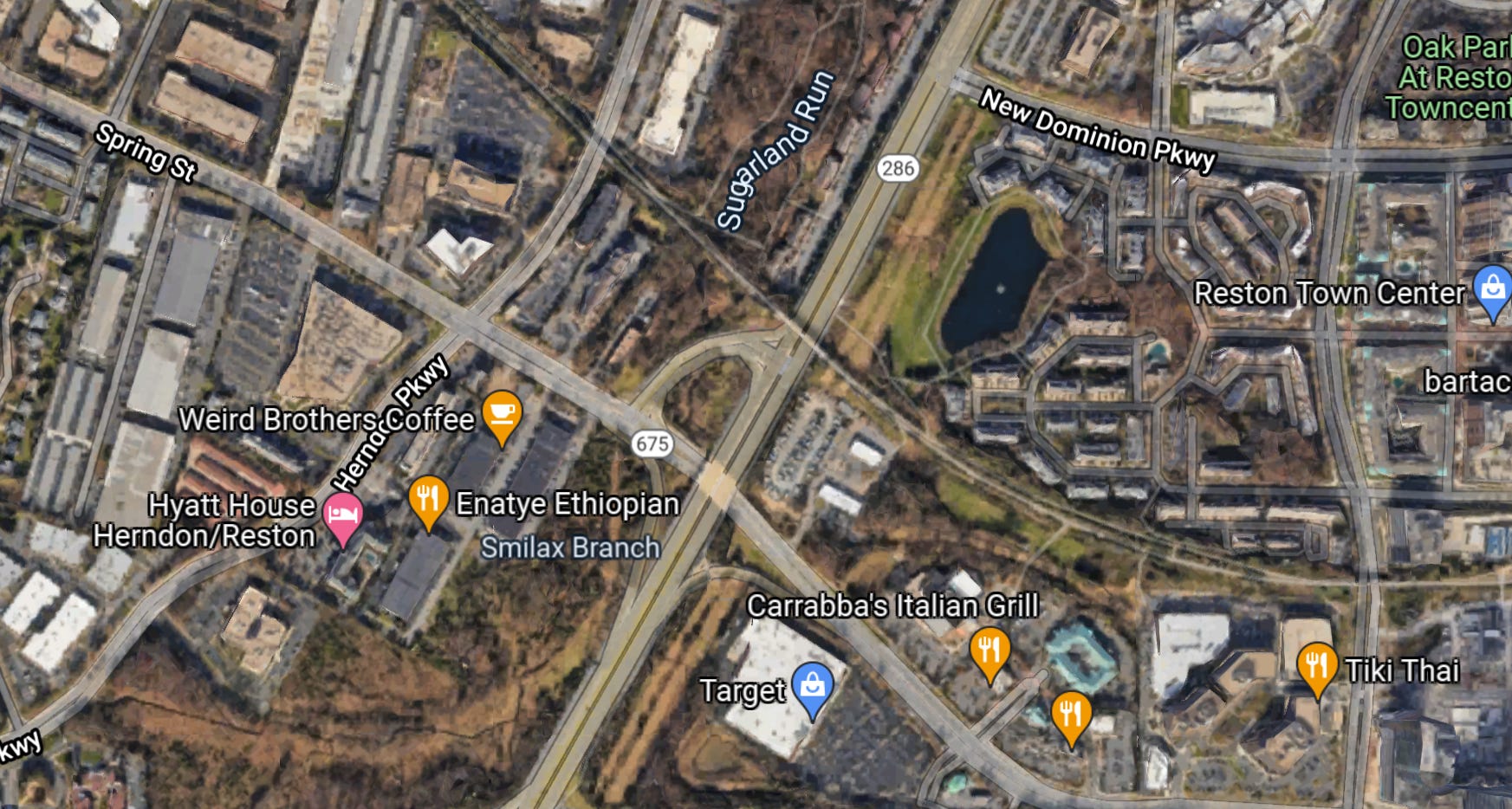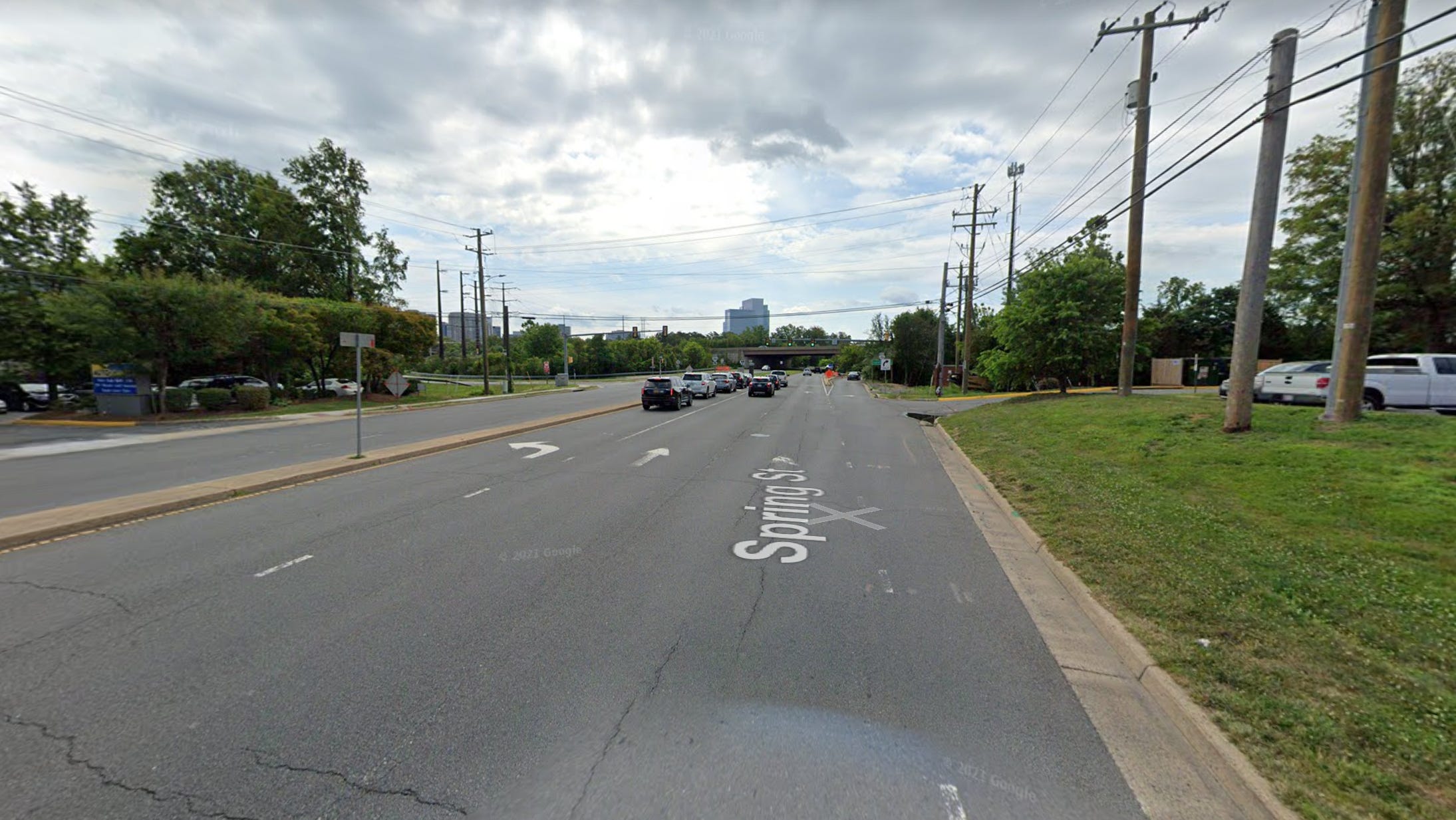The Deleted Scenes - What If I Want to Walk?
I’ve done some writing on parking lots before, parking being a huge aspect of how the built environment looks, feels, and operates. As Todd Litman put it at Planetizen:
Here’s a piece I wrote for Strong Towns about informal commerce in underused parking lots. And here at this newsletter I wondered, mostly as a thought experiment, what would happen if suburban parking lots were not tied to their specific stores or strip plazas, but were instead simply public, usable by anybody shopping or walking anywhere. That’s what I’m coming back to here. I’ve been working out of a coffee shop since early July, in a sort of light industrial park in Herndon, Virginia, the next town over from my home of Reston. There are a bunch of other stores and businesses—a couple of bakeries, a few restaurants, a print shop, a catering house, etc. Down the road about 1,500 feet is a Target where I frequently do quick shopping trips, usually to pick up something small like toothpaste or dishwasher pods. About 1,200 feet in the other direction is a Habitat for Humanity ReStore, a thrift shop where I also frequently look around. The Target is about a 10-minute walk, at my brisk pace. Maybe a little less. The thrift store is about a five-minute walk. About a mile away, roughly an 18-20 minute walk, is the Reston Town Center, a downtown-style development that, all things considered, is pretty well done. Here’s a satellite shot of all this (copyright Google Maps). I’m at Weird Brothers Coffee, in the middle; the Target is labeled on the bottom middle, and the thrift store is on the left near the Spring Street label. The Reston Town Center is at the far right. Those distances are eminently walkable. However, you’d have to walk along here: And what’s more, there’s nowhere to park. I don’t mean there are no spaces; the many parking lots along here are almost never full. The issue is that there is nowhere to leave your car and walk around to different properties in the area, because technically each parking lot is exclusive to whatever property it’s attached to. It’s unlikely anyone will call the tow truck if you park and walk off, but it’s possible. And there’s also no easy way to get here without a car in the first place. The rules, as written, do not accommodate treating this environment as an urban fabric. I wrote about something similar, also for Strong Towns, when I walked down U.S. 50 in the City of Fairfax, Virginia:
This is a pretty standard urbanist critique of car-dependent built environments. But what’s interesting to me is how this shapes my behavior. During long days at the coffee shop—from 8am to 4pm, most days—it would be nice to go for a walk up and down the street or to the thrift store or Target, and come back. Or to spend an hour strolling around the Town Center. However, I can’t really do that, because I’d be leaving the car at the coffee shop’s lot and walking off. This forces me to kind of camp out at the coffee shop. It makes it feel, like U.S. 50, that every property along this street is an island unto itself, not connected or stitched together to the others. It seems to reinforce a kind of alienated individualism. It makes it impossible to perceive this strip as a place, where you can move between the properties which ultimately add up to something. The design and rule set produces a certain, particular set of behaviors and attitudes. When you have to drive everywhere, and stop and park at each piece of private property, it makes it hard to form a mental map. Car dependence is at least in part a way of looking at places. The design shapes a certain psychology, and that psychology in turn shapes how we build. We’ve put considerable effort into making it difficult to get around. We’ve purposely added friction to the variety and fluidness of urban life, whether at the scale of a city or a small town. And we view this strange state of affairs as a normal or baseline condition. I’m not arguing for getting rid of parking lots, or private property, obviously. I’m trying to convey that this ubiquitous way of designing places is very much a consequence of policy choices, values, and assumptions. You have to really grasp that before you can think about what it would take to make it better. Related Reading: Taking Off the Car Blinders, Opening Your World 300 People and History in Clifton, VA If you like what you’re seeing, please consider a paid subscription to help support this work. You’ll get a weekend subscribers-only post, plus full access to the archive. And you’ll help ensure more material like this! You’re on the free list for The Deleted Scenes. For the full experience, become a paying subscriber. |
Older messages
Apartments, Ownership, and Responsibility
Monday, September 27, 2021
Owning a detached house does not indicate moral superiority
New and Old #24
Friday, September 24, 2021
Friday roundup and commentary
Office Depot Time Capsule
Thursday, September 23, 2021
The store is a living dinosaur, and I like it
What Do You Think You're Looking At? #24
Wednesday, September 22, 2021
An illustrated series on the unexpected lives of commercial buildings
What is Zoning?
Tuesday, September 21, 2021
A few answers
You Might Also Like
Genneya Walton Is Proof That Manifestations Work
Tuesday, March 18, 2025
Plus: How Steven Soderbergh made the most electrifying spy thriller of the year. • Mar. 18, 2025 Up Next Your complete guide to industry-shaping entertainment news, exclusive interviews with A-list
The Real History Behind ‘Stag Dance’
Tuesday, March 18, 2025
And the most egregious things about working at Facebook in the new whistleblower memoir 'Careless People.' Book Gossip This month: Torrey Peters tells us how she conceived of the title novella
New from Tim — "Richard Taylor and Greg Broadmore, Wētā Workshop — Untapping Creativity, Stories from The Lord of the Rings, and More"
Tuesday, March 18, 2025
The latest from author and investor Tim Ferriss ͏ ͏ ͏ ͏ ͏ ͏ ͏ ͏ ͏ ͏ ͏ ͏ ͏ ͏ ͏ ͏ ͏ ͏ ͏ ͏ ͏ ͏ ͏ ͏ ͏ ͏ ͏ ͏ ͏ ͏ ͏ ͏ ͏ ͏ ͏ ͏ ͏ ͏ ͏ ͏ ͏ ͏ ͏ ͏ ͏ ͏ ͏ ͏ ͏ ͏ ͏ ͏ ͏ ͏ ͏ ͏ ͏ ͏ ͏ ͏ ͏ ͏ ͏ ͏ ͏ ͏ ͏ ͏ ͏ ͏ ͏ ͏ ͏ ͏ ͏ ͏ ͏
8 Subtle Scams Real Estate Agents Might Pull
Tuesday, March 18, 2025
Microsoft Just Uninstalled Copilot From Your PC. These scams may not be illegal, but they're not exactly ethical. Not displaying correctly? View this newsletter online. TODAY'S FEATURED STORY
Cars In Cusco
Tuesday, March 18, 2025
A curiosity of pre-car cities with cars ͏ ͏ ͏ ͏ ͏ ͏ ͏ ͏ ͏ ͏ ͏ ͏ ͏ ͏ ͏ ͏ ͏ ͏ ͏ ͏ ͏ ͏ ͏ ͏ ͏ ͏ ͏ ͏ ͏ ͏ ͏ ͏ ͏ ͏ ͏ ͏ ͏ ͏ ͏ ͏ ͏ ͏ ͏ ͏ ͏ ͏ ͏ ͏ ͏ ͏ ͏ ͏ ͏ ͏ ͏ ͏ ͏ ͏ ͏ ͏ ͏ ͏ ͏ ͏ ͏ ͏ ͏ ͏ ͏ ͏ ͏ ͏ ͏ ͏ ͏ ͏ ͏ ͏ ͏ ͏ ͏
“Job,” by Joseph Millar
Tuesday, March 18, 2025
I've just come from walking to and fro / in the earth, ͏ ͏ ͏ ͏ ͏ ͏ ͏ ͏ ͏ ͏ ͏ ͏ ͏ ͏ ͏ ͏ ͏ ͏ ͏ ͏ ͏ ͏ ͏ ͏ ͏ ͏ ͏ ͏ ͏ ͏ ͏ ͏ ͏ ͏ ͏ ͏
“Bathroom divorce” is all the rage
Tuesday, March 18, 2025
— Check out what we Skimm'd for you today March 18, 2025 Subscribe Read in browser Together with brad's deals But first: how to score a next-to-nothing trip to Disney Update location or View
“‘How old is Maggie?’” by Jennifer L. Knox
Tuesday, March 18, 2025
the energy healer asks over speakerphone. ͏ ͏ ͏ ͏ ͏ ͏ ͏ ͏ ͏ ͏ ͏ ͏ ͏ ͏ ͏ ͏ ͏ ͏ ͏ ͏ ͏ ͏ ͏ ͏ ͏ ͏ ͏ ͏ ͏ ͏ ͏ ͏ ͏ ͏ ͏ ͏ ͏ ͏ ͏ ͏
Ben Affleck is not an ATM
Tuesday, March 18, 2025
— Check out what we Skimm'd for you today March 12, 2025 Subscribe Read in browser Header Image But first: everyone's talking about this kourtside couple. Update location or View forecast Good
Trump's Mounting Economic Problems and his Tone Deaf Tesla Stunt
Tuesday, March 18, 2025
The President's chaotic incompetence is hurting the economy and his poll numbers ͏ ͏ ͏ ͏ ͏ ͏ ͏ ͏ ͏ ͏ ͏ ͏ ͏ ͏ ͏ ͏ ͏ ͏ ͏ ͏ ͏ ͏ ͏ ͏ ͏ ͏ ͏ ͏ ͏ ͏ ͏ ͏ ͏ ͏ ͏ ͏ ͏ ͏ ͏ ͏ ͏ ͏ ͏ ͏ ͏ ͏ ͏ ͏ ͏ ͏ ͏ ͏ ͏ ͏ ͏ ͏ ͏ ͏


